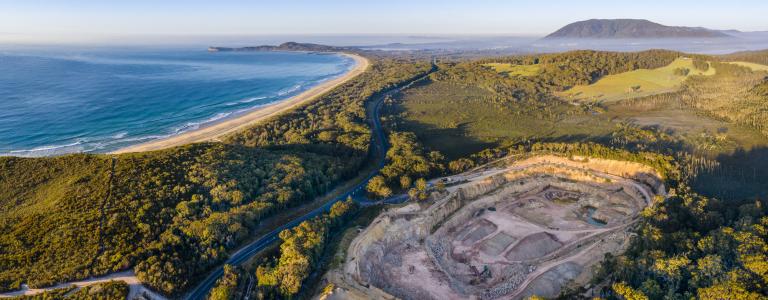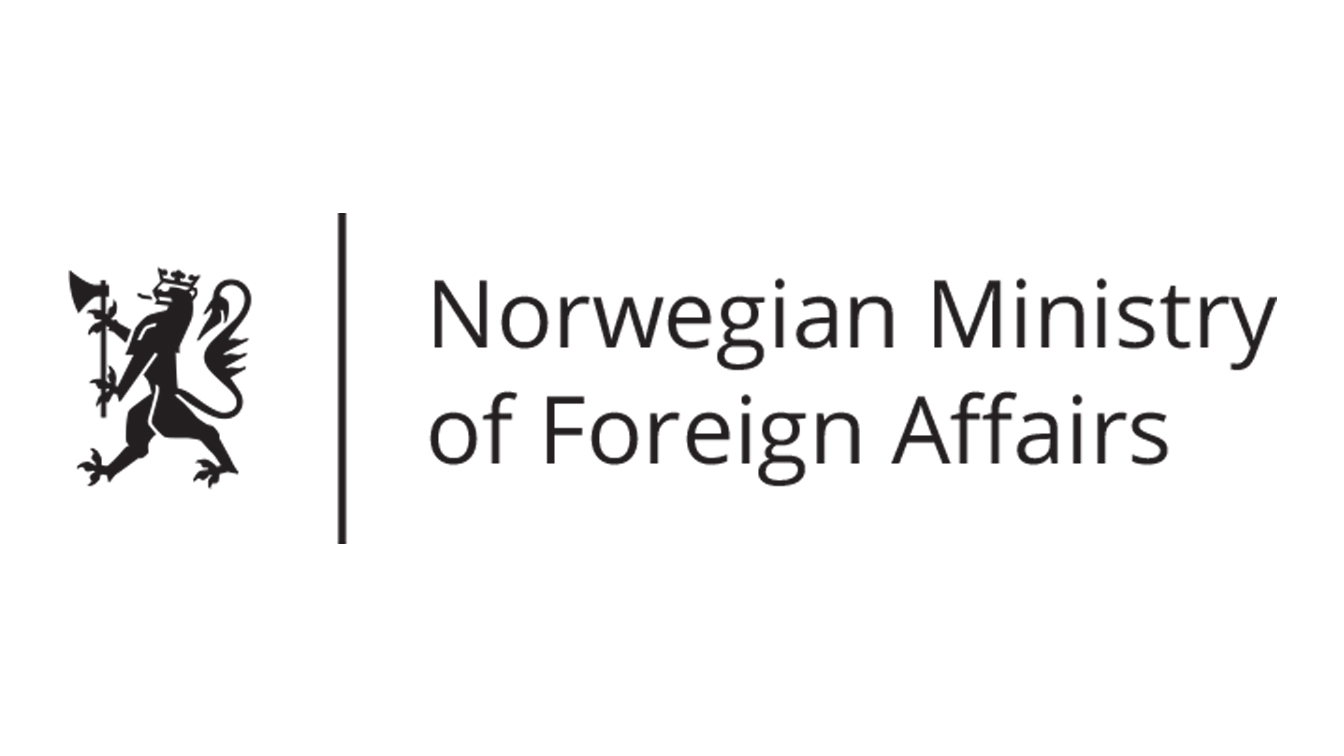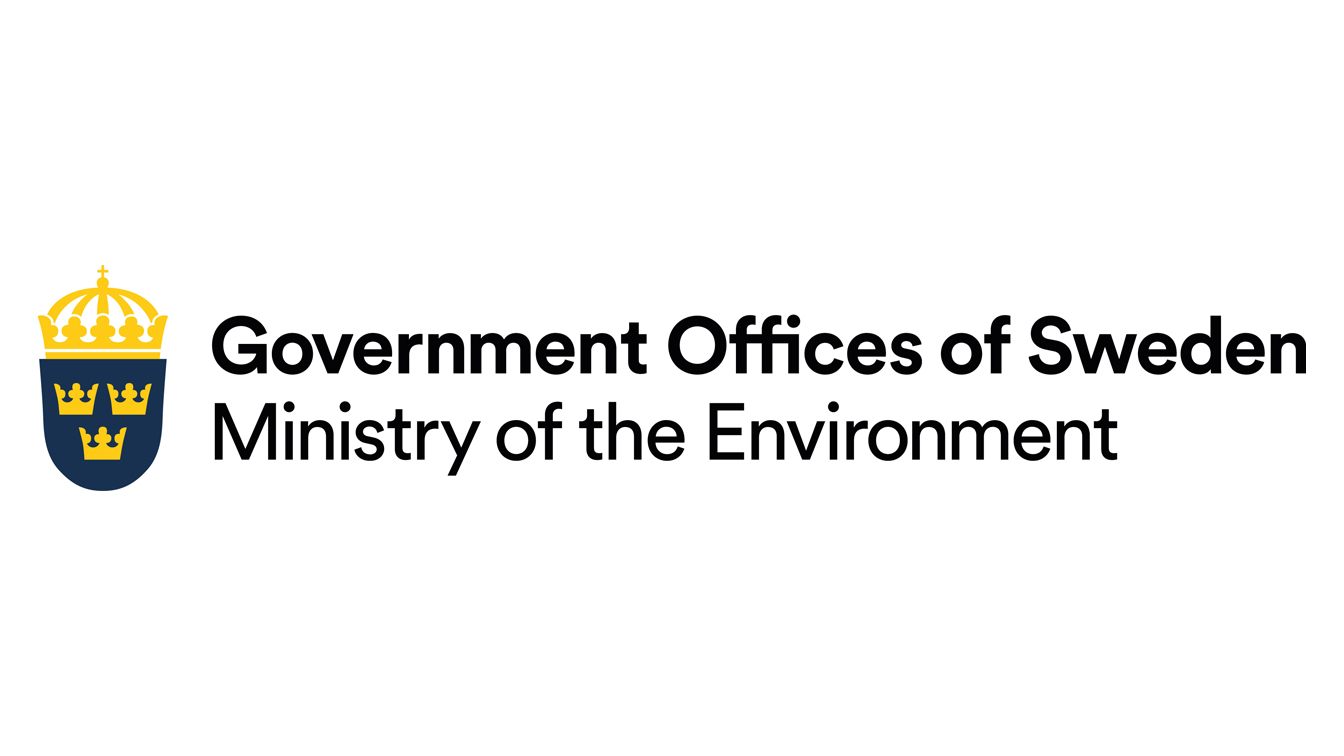How to Advance Sustainable Mining
Still Only One Earth: Lessons from 50 years of UN sustainable development policy
Mining companies reap huge benefits extracting valuable minerals, but often at a cost to surrounding communities and the environment. Regulating these activities mainly depends on national frameworks and policies, but implementing good practices remains problematic. To truly shift to “sustainable mining,” governments and companies must recognize the social impacts of mining, and enact laws and regulations that require community consultation throughout the life of a mine. (Download PDF) (See all policy briefs) (Subscribe to ENB)
As a child, Kongolo Mashimango Reagen spent many days carrying 25-kilo sacks of cobalt from small mines in the Democratic Republic of Congo. His long days started at 5:00 am. Accidents were common. Tunnels dug by hand into the bright red earth often collapsed. He saw many children like himself die in the mines. His uncle sold the cobalt—a critical metal for electric car batteries—to local traders, and Kongolo received free food and board as his payment (Sanderson, 2019).
For more than a decade, informal mines in places like the Democratic Republic of Congo have enabled the global digital revolution. The world’s largest mining companies rub shoulders with miners who dig copper and cobalt by hand with little or no safety precautions (Sanderson, 2019). Small-scale mining is a double-edged sword for these local communities, providing employment but negatively affecting human health and the environment. Large-scale mining also affects communities both positively and negatively, albeit through different dynamics and obligations. The international community has not had much success in regulating mining activities, which remain largely under the purview of national governments.
Yet many countries with rich mineral deposits do not have the capacity to govern mines effectively, with political elites often syphoning off the proceeds.
The Impact of Mining
The extractives or mining industry cause some of the most dramatic impacts on the natural environment and human health. The footprint of mining operations is often visible from outer space, with large areas of excavation standing out in a sea of green forest. Technological advances have amplified the sector’s environmental impact while reducing local economic benefits, since they allow for removal of plant biomass more rapidly. While this is true in many sensitive ecosystems where companies do not respect their contractual obligations, some newly developed technologies favor the environment, such as waterless and zero-waste mines.

Mining activities can affect social and environmental systems in direct and indirect ways. Mine exploration, construction, operation, and maintenance may result in land-use change, leading to deforestation, erosion, contamination and alteration of soil profiles, contamination of local streams and wetlands, and an increase in noise level, dust, and emissions. Mine abandonment, decommissioning, and repurposing can also result in significant environmental impacts, especially soil and water contamination. The infrastructure that supports mining activities, including roads, ports, railway tracks, and power lines, can affect migratory routes of animals and increase habitat fragmentation (Haddaway et al., 2019).
The disposal of tailings is commonly identified as the single greatest environmental impact for most mining operations (Vick, 1990). The volume of tailings requiring storage often exceeds the total volume of the ore being mined and processed, with a dramatic increase over the last century as demand has increased and lower grades of ore are being mined through advances in extraction and processing technology. The rate of tailing production over the past 50 years increased exponentially with some individual mines producing more than 200,000 tonnes of tailings per day (Jakubick et al. 2003). It is therefore critical to research the characteristics and chemical composition of mine tailings during pre-feasibility pilot studies, and to establish the behaviour of the tailings once deposited in their final storage location to determine liabilities and environmental impacts. Following the Vale mine’s tailings dam collapse in Brudaminho, Brazil, in 2019, the International Council on Mining and Metals (ICMM) led an industry initiative in setting the standards to eliminate similar accidents.
Mining activities can create many jobs, which have the potential to unlock economic opportunities, both directly and indirectly benefitting community members. These economic benefits may not match the scale of profits extracted by mining companies, however, since many mines are also a possible source of child labour, poverty, pollution, and disease. (See Table 1.)
| Positive Impacts | Negative Impacts |
|---|---|
|
|
Furthermore, despite providing jobs, for decades most of the revenue from mining has eluded those most affected. Reporting on mining in Ghana, Daniel Twerefou, et al. (2015) note: “... in many mining communities today, the relationship between mining companies and the local community cannot be described as the best… [this] may have downstream impacts on the sector if measures are not put in place to improve the relationship.”
In addition, mineral resources are not renewable. After a period of production and peaking revenues, the productivity and accompanying revenue will inevitably drop, until the resource is depleted and operations cease. Without preparation for this inevitability, host communities will be plunged into poverty, worse than before mining began. This is the so-called “resource curse.” Such over-exploitation coupled with weak resource governance are challenging for many mineral-rich developing countries (Fitriani et al., 2015).
Two extreme pictures emerge when investigating the impacts of mine activities on the surrounding communities. In this sense, mining challenges all three dimensions of sustainable development: economic, social, and environmental. When governments and mining companies do not address these challenges, the areas around mine sites often become degraded landscapes filled with informal settlements and scrambling artisanal miners eking out a living adjacent to the garish mine infrastructure and swarming monster trucks.
The Challenge of International Mining Governance
Traditionally, the international community has taken a “hands-off” approach to mining, although it has been referenced at the sustainable development mega-conferences. It is a general principle of international law that countries have sovereignty over their own natural resources. In fact, this was codified at the 1972 United Nations Conference on the Human Environment in Stockholm, Sweden, as Principle 21 in the Stockholm Declaration.
Recommendation 56 of the Stockholm Action Plan called on the UN Secretary-General to provide a platform for the exchange of information on mining and mineral processing, including the environmental conditions of mine sites.
States have, in accordance with the Charter of the United Nations and the principles of international law, the sovereign right to exploit their own resources pursuant to their own environmental policies, and the responsibility to ensure that activities within their jurisdiction or control do not cause damage to the environment of other States or of areas beyond the limits of national jurisdiction.
Twenty years later, at the 1992 UN Conference on Environment and Development (Earth Summit) in Rio de Janeiro, Brazil, the adopted action plan, Agenda 21, called for more environmentally sound mining in Chapters 11 (forests), 13 (mountains), and 17 (oceans). Principle 2 of the Rio Declaration, however, reiterated countries’ sovereign right to exploit their own resources.
Ten years later at the 2002 World Summit on Sustainable Development (WSSD), paragraph 46 of Johannesburg Plan of Implementation (JPOI) recognized the importance of mining, minerals, and metals to economic and social development. Paragraph 46 of the JPOI called on governments to: (a) support efforts to address the environmental, economic, health, and social impacts and benefits of mining, minerals, and metals, including workers’ health and safety; (b) enhance the participation of stakeholders to play an active role throughout the life cycles of mining operations, including after closure for rehabilitation purposes; and (c) foster sustainable mining practices.
The WSSD also contributed to the establishment of the Intergovernmental Forum on Mining, Minerals, Metals and Sustainable Development (IGF) to improve governance and decision-making to leverage mining for sustainable development. The IGF now supports 79 member states through capacity building, including improving sustainable mining practices, addressing tax base erosion and profit shifting, and ensuring resource governance and social progress.
Finally, in 2012, at the UN Conference on Sustainable Development (Rio+20), the outcome document, The Future We Want, recognized in paragraph 228 the “importance of strong and effective legal and regulatory frameworks, policies and practices for the mining sector that deliver economic and social benefits and include effective safeguards that reduce social and environmental impacts, as well as conserve biodiversity and ecosystems, including during postmining closure.”
Despite attention to mining, these conferences never called for a comprehensive international treaty. But there are treaties with provisions that can help regulate the industry. Three categories of international law are relevant to mining: international investment treaties, international human rights law, and environmental conventions and treaties (Pring et al., 1999).
International investment treaties establish the terms and conditions for private investment by nationals and companies of one state in another state. Home country governments enter into these agreements to protect their companies’ investments abroad. Host country governments do so to promote foreign investment in their countries. While these agreements provide strong and effective economic protection for investors, they do not provide similarly strong protections for people and the environment affected by mining investments.
There are human rights agreements that can protect people who work in and live near mining operations. These include the 1948 Universal Declaration of Human Rights, the 1966 International Covenant on Civil and Political Rights, and the 1966 International Covenant on Economic, Social and Cultural Rights. The 1989 Convention on the Rights of the Child addresses child labour, and the International Labour Organization (ILO) Convention No. 169 on the rights of Indigenous Peoples is based on respect for the cultures and ways of life of Indigenous and tribal peoples. The nonbinding 2007 UN Declaration on the Rights of Indigenous Peoples and the 2011 UN Guiding Principles on Business and Human Rights also fall under this category. The UN Guiding Principles have driven many mining companies to undertake policies that have a positive influence on host communities, such as creating plans for community development.
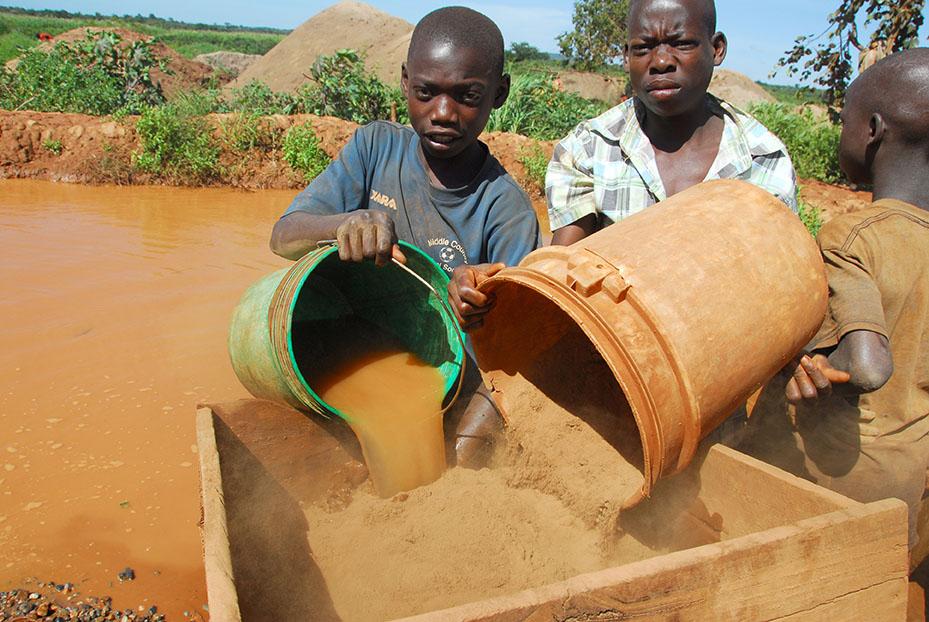
The environmental treaties that affect mining the most are those that protect natural areas and resources. A “listing” under one of these treaties can place areas off limits to mining development (Pring et al., 1999). Examples include: the 1971 Ramsar Convention on Wetlands of International Importance; the 1972 Convention Concerning the Protection of the World Cultural and Natural Heritage; and the 1979 Bonn Convention on the Conservation of Migratory Species of Wild Animals. The 1991 Protocol on Environmental Protection to the Antarctic Treaty designates Antarctica as a “natural reserve, devoted to peace and science,” and prohibits all activities related to mineral resources. The 1982 UN Convention on the Law of the Sea governs mining on the seabed and subsoil beyond the limits of national jurisdiction. These activities are regulated under the International Seabed Authority.
There are also international treaties that address the transboundary movement of hazardous waste, which can include the disposal of tailings. These include the 1989 Basel Convention on the Transboundary Movement of Hazardous Wastes and Their Disposal, the 1991 Bamako Convention and the 1995 Waigani Convention.
Finally, the 2013 Minamata Convention on Mercury addresses the use of mercury in artisanal and small-scale gold mining (ASGM). These miners, primarily in developing countries, use mercury to extract gold from ore because it is relatively inexpensive and easy to use. Nearly all the mercury used in ASGM is eventually released directly into the environment and pollutes the atmosphere, soils, and waterways, exposing miners and their communities to serious health risks.
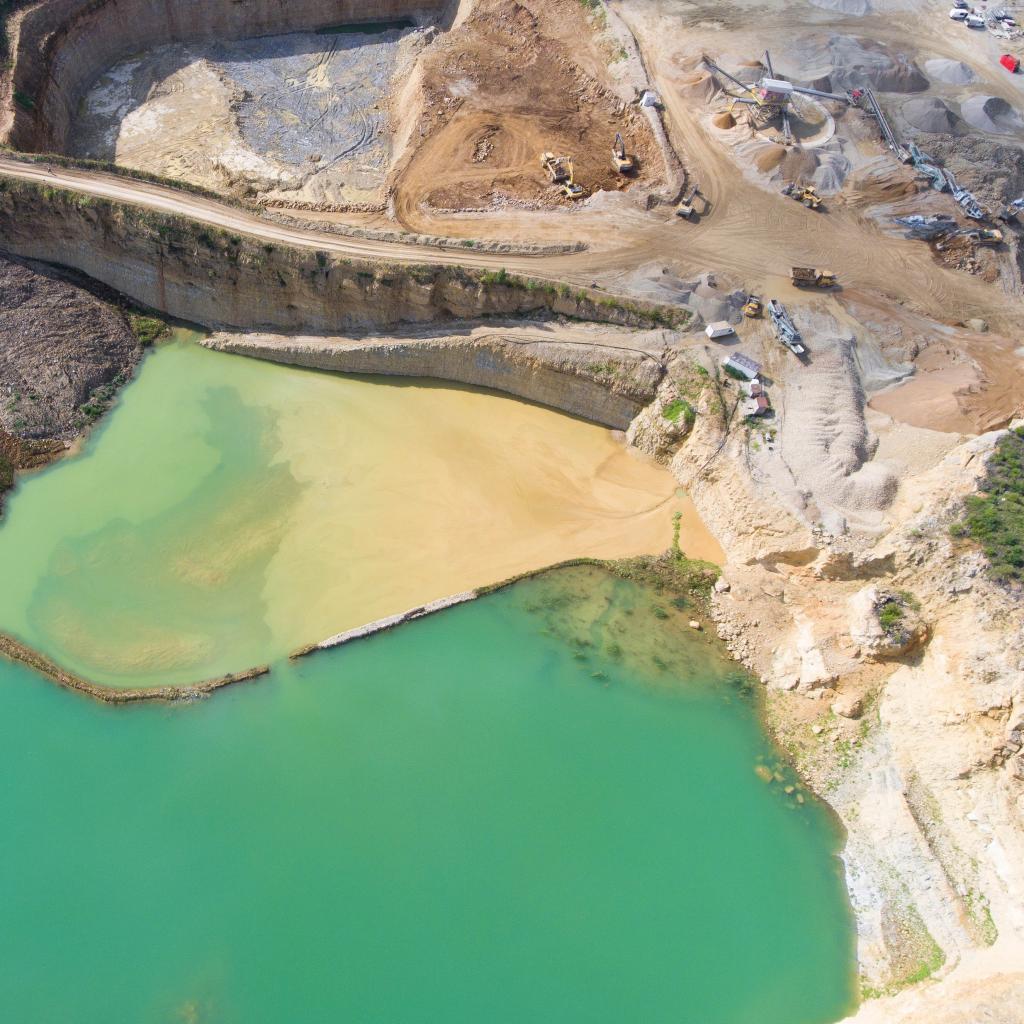
The Challenge of Domestic Regulation
Despite these international agreements, mining governance still largely relies on national and local institutions and legal frameworks. The biggest challenges are implementation of regulations where they exist, and either a lack of strong penalties, or lack of political will to enforce penalties.
Many governments have adopted the “polluter pays” principle, which has become embedded into environmental frameworks with increasingly stringent requirements. Governments have traditionally used prescriptive approaches (called technology standards) that specify technologies to reduce pollution, but recently performance-based regulation with specific targets for environmental performance and economic instruments have become more widespread (UNDP, 2018). The main tools used to reduce environmental and social impacts are environmental impact assessments, through which governments and mining companies can conduct cumulative and strategic assessments to formulate plans and policies.
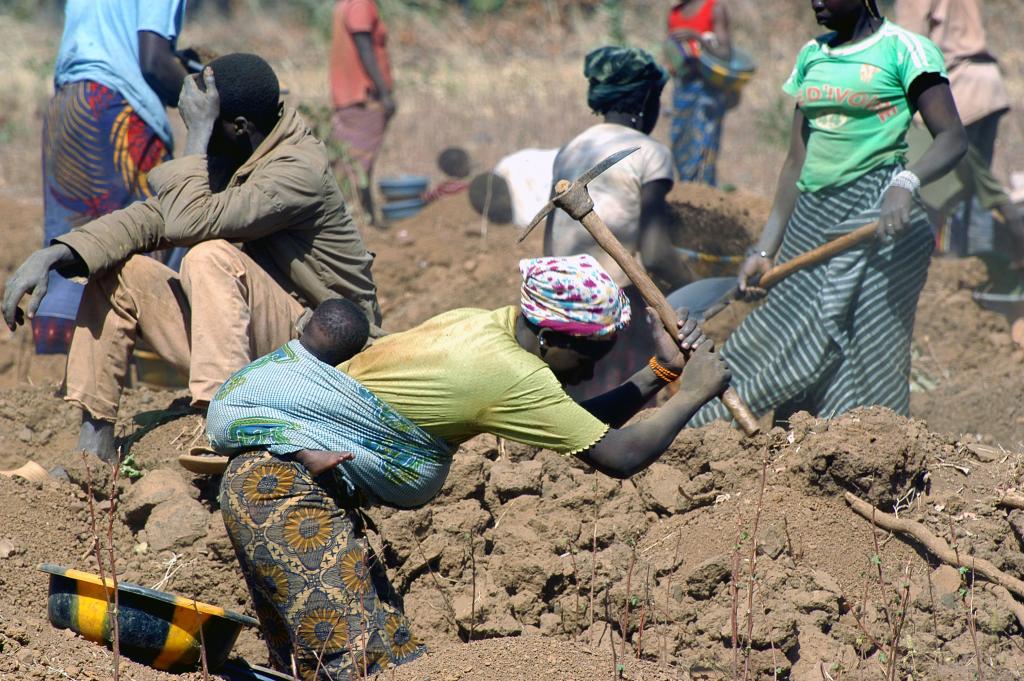
The greater dilemma relates to implementation of domestic policies. Governments and mining companies, recognizing the social impacts of mining, have increasingly introduced laws and regulations that require community consultation throughout the life of a mine. The United States, through the Dodd–Frank Wall Street Reform and Consumer Protection Act (Dodd-Frank) and in the European Union through the Organisation for Economic Co-operation and Development (OECD) Due Diligence frameworks developed strong obligations for companies listed in their stock markets to track their supply chains for conflict minerals. Such initiatives show promise, although they do not necessarily focus on the root cause of the problem, and do not include all minerals.
Unfortunately, some developing countries have been much slower in accepting community consultation and engagement principles, and even where this practice has become enshrined in national laws, proper implementation is often problematic. Some challenges include instances where mine company staff with limited social development expertise either make random decisions about community benefit projects without proper consultation, or social performance spending follows corrupt routes through flawed tender processes with no benefit to the community.
Forging Win-Win Solutions
There is a need for more innovative solutions to optimize the mining industry’s benefits and reduce its negative social and environmental impacts. Public-private partnerships, given enough political will and business commitment, are one such option.
In 2011, Anglo American CEO Mark Cutifani combined forces with the Kellogg Innovation Network’s Peter Bryant to find solutions to the complex challenges facing mining companies. A chronic lack of investment in innovation had reduced productivity, leading to increased costs and subpar returns on capital. At the same time, legacy environmental, health, and safety issues had diminished mining’s social license to operate in many communities. The solution was to recast the mining business model as a development partnership, and to work with stakeholders to pursue shared goals. This initiative saw the development of joint regional plans among government, community, and mine partners, with the southern African region as one of the first to implement such an initiative. These partnerships can jointly improve infrastructure, education, health services, and capacity building for these communities (KIN Development Partner Framework, 2014).
Other similar initiatives are illustrated by the International Council on Mining and Metals (ICMM). In collaboration with academic researchers, the Council has developed a matrix approach to identify technology solutions for the mining sector across six UN Sustainable Development Goals (SDGs): nutrition and agriculture (SDG 2), good health and wellbeing (SDG 3), clean water and sanitation (SDG 6), affordable and clean energy (SDG 7), industry and innovation (SDG 9), and sustainable communities (SDG 11).
Most mining companies now have some form of corporate social responsibility approach through their activities, or are required to implement environmental, social, and governance principles, a key funding metric used by investors.
Our success as an industry is not only measured by the ounces, carats, or tons we mine, it is also measured by whether we improve people's lives.
Some mining companies have introduced the SDGs into their work. For example, in addition to focusing on energy efficiency, mining companies can leverage their energy demand to extend power to undersupplied areas through partnerships that enable shared use of energy infrastructure, helping to achieve SDG 7. At Semafo’s Mana mine in Burkina Faso, Windiga Energy is building a 20MW solar plant, the largest in sub-Saharan Africa. The Mana mine will purchase energy from the plant, and the surplus will feed the national grid. Similar opportunities exist for the mining sector to contribute to the other SDGs, including catalyzing economic growth and employment (SDG 8), creating more resilient infrastructure (SDG 9), and combating climate change (SDG 13), among others (UNDP, et al., 2016).
At face value, sustainable mining appears to be an oxymoron, since minerals, once extracted, cannot be replaced in their original form. While this is true, it is undeniable that the high value placed on minerals can unlock huge benefits for a community or country. Many recent initiatives have been driven by national government policies or, in some cases, through mining companies that recognize the value of acting justly and introducing sustainability as an objective. The COVID-19 pandemic emphasized the need to prioritize the health and wellbeing of any mine’s most important asset: its labor force. This highlights the need for forging private-public partnerships to strengthen government support services, particularly in rural communities. The key to any sustainable development intervention is to consult with those who can benefit most, the immediate communities. Without addressing their real concerns, they are forced to pay the highest price—far beyond the actual value of the minerals extracted.
Works Consulted
Cutifani, M. & Bryant, P. (2015). Reinventing mining: Creating sustainable value. Kellogg Innovation Network.
Fitriani, E., Hutapea, M., & Tumiwa, F. (2014). Dare to transform: Governing extractive industries in Southeast Asia. In E. Fitriani, et al. (Eds.) Governance on extractive industries: Assessing national experiences to inform regional cooperation in Southeast Asia (pp.1-31). UI Press. https://www.researchgate.net/publication/309152110
Haddaway, N.R., Cooke, S.J., Lesser, P., Macura, B., Nilsson, A.E., Taylor, J.J., & Raito, K. (2019). Evidence of the impacts of metal mining and the effectiveness of mining mitigation measures on social–ecological systems in Arctic and boreal regions: A systematic map protocol. Environmental Evidence 8, 9. https://doi.org/10.1186/s13750-019-0152-8
Jakubick, A.G., McKenna, G., & Robertson, A.G. (2003). Stabilisation of tailings deposits: International experience. Mining and the Environment III. https://rgc.ca/files/publications/Sudbury2003_Jakubick_McKenna_AMR.pdf
Pring, G., Otto, J., & Naito, K. (1999). Trends in environmental law affecting the mining industry (Part II), Journal of Energy & Natural Resources Law, 17(2), pp. 151-177, https://doi.org/10.1080/02646811.1999.11433164
Sanderson, H. (2019). Congo, child labour and your electric car. Financial Times. https://www.ft.com/content/c6909812-9ce4-11e9-9c06-a4640c9feebb
Twerefou, D.K., Tutu, K., Owusu-Afriye, J., & Adjei-Mantey, K. (2015). Attitudes of local people to mining policies and interventions. International Growth Center Working Paper E-33107-GHA-1. https://www.theigc.org/wp-content/uploads/2015/08/Twerefou-et-al-2015-Working-paper-1.pdf
United Nations Development Programme, Columbia Center on Sustainable Investment, Sustainable Development Solutions Network, & World Economic Forum. (2016). Mapping mining to the Sustainable Development Goals: An atlas. https://www.undp.org/content/undp/en/home/librarypage/poverty-reduction/mapping-mining-to-the-sdgs--an-atlas.html
United Nations Development Programme. (2018). Managing mining for sustainable development: A sourcebook. https://www.undp.org/content/undp/en/home/librarypage/poverty-reduction/Managing-Mining-for-SD.html
United Nations Economic Commission for Africa. (2017). Impact of illicit financial flows on domestic resource mobilization: Optimizing revenues from the mineral sector in Africa. https://repository.uneca.org/handle/10855/23862
Vick, S.G. (1990). Planning, design, and analysis of tailings dams. BiTech Publishers. https://open.library.ubc.ca/cIRcle/collections/ubccommunityandpartnerspublicati/52387/items/1.0394902
Additional downloads
You might also be interested in
Securing India's Copper Supply
This policy brief emphasizes the need for India to develop a comprehensive copper strategy.
Gender in Artisanal and Small-Scale Mining Training Workshop for Nigeria
The IGF delivered a workshop about gender equality and related issues in ASM for key officials in Nigeria.
Rethinking Investment Treaties
International investment treaties and their investor–state dispute settlement (ISDS) system are facing growing scrutiny. But what would an alternative system—one fit for the challenges of the 21st century—look like?
IGF Case Study: Leveraging Technologies for Gender Equality in Mining Communities
How can sharing technological infrastructure support gender equality and serve the broad betterment of mining communities?
